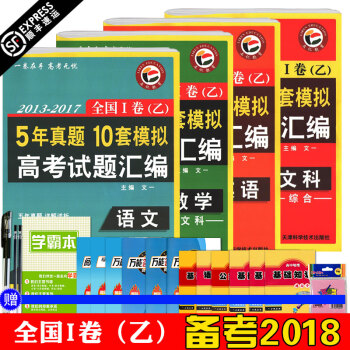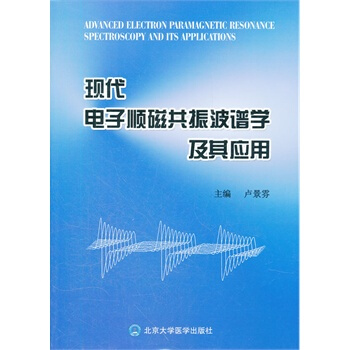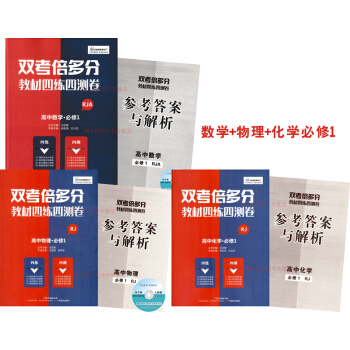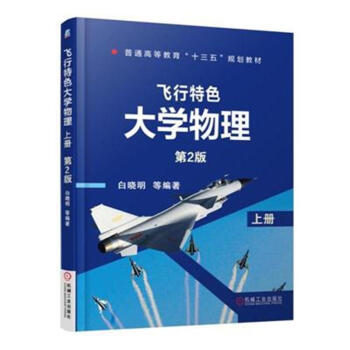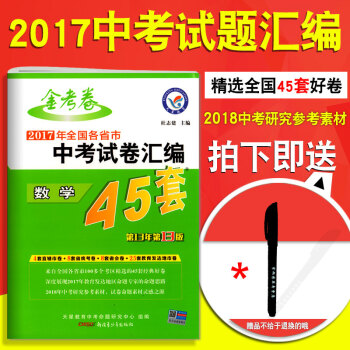![[按需印刷]應用非綫性控製(英文版) (美)Jean-Jacques E…|21888](https://pic.tinynews.org/25200617480/5b3444f8N8c91bb19.jpg)

具體描述
| 書名: | 應用非綫性控製(英文版)[按需印刷]|21888 |
| 圖書定價: | 100元 |
| 圖書作者: | (美)Jean-Jacques E.Soltine,Weiping Li |
| 齣版社: | 機械工業齣版社 |
| 齣版日期: | 2004-10-01 0:00:00 |
| ISBN號: | 7111152182 |
| 開本: | 16開 |
| 頁數: | 461 |
| 版次: | 1-1 |
| 作者簡介 |
| Jean-Jacques E.Slotine於麻省理工學院獲得博士學位。現任麻省理工學院機械工程係及信息科學係教授,非綫性係統實驗室主任。他的主要研究方嚮包括機器人學、非綫性控製、學習係統等。 |
| 內容簡介 |
| 本書詳細探討瞭現代非綫性係統的分析與設計技術,並提供瞭分析非綫性係統的工具。主要內容包括相平麵分析、描述函數分析、反饋綫性化、滑動控製以及自適應控製等。另外,還提供瞭大量例題與習題,便於教學。 本書結構安排閤理,實踐性強,適閤作為高等院校理工科專業的教材,同時對非綫性控製初學者以及相關工程技術人員來說也是一本很好的參考書。 |
| 目錄 |
Preface iii 1. Introduction 1.1 Why Nonlinear Control ? 1 1.2 Nonlinear System Behavior 4 1.3 An Overview of the Book 12 1.4 Notes and References 13 Part I: Nonlinear Systems Analysis 14 Introduction to Part I 14 2. Phase Plane Analysis 17 2.1 Concepts of Phase Plane Analysis 18 2.1.1 Phase Portraits 18 2.1.2 Singular Points 20 2.1.3 Symmetry in Phase Plane Portraits 22 2.2 Constructing Phase Portraits 23 2.3 Determining Time from Phase Portraits 29 2.4 Phase Plane Analysis of Linear Systems 30 2.5 Phase Plane Analysis of Nonlinear Systems 32 2.6 Existence of Limit Cycles 36 2.7 Summary 38 2.8 Notes and References 38 2.9 Exercises 38 3. Fundamentals of Lyapunov Theory 40 3.1 Nonlinear Systems and Equilibrium Points 41 3.2 Concepts of Stability 47 3.3 Linearization and Local Stability 53 3.4 Lyapunov's Direct Method 57 3.4.1 Positive Definite Functions and Lyapunov Functions 58 3.4.2 Equilibrium Point Theorems 61 3.4.3 lnvariant Set Theorems 68 3.5 System Analysis Based on Lyapunov's Direct Method 76 3.5.1 L yapunov Analysis of Linear Time-lnvariant Systems 77 3.5.2 Krasovskii' s Method 83 3.5.3 The Variable Gradient Method 86 3.5.4 Physically Motivated Lyapunov Functions 88 3.5.5 Performance Analysis 91 3.6 Control Design Based on Lyapunov's Direct Method 94 3.7 Summary 95 3.8 Notes and References 96 3.9 Exercises 97 4. Advanced Stability Theory 100 4.1 Concepts of Stability for Non-Autonomous Systems I01 4.2 Lyapunov Analysis of Non-Autonomous Systems 105 4.2.1 Lyapunov' s Direct Method for Non-Autonomous Systems 105 4.2.2 Lyapunov Analysis of Linear Time-Varying Systems 114 4.2.3 * The Linearization Method for Non-Autonomous Systems 116 4.3 * Instability Theorems 117 4.4 * Existence of Lyapunov Functions 120 4.5 Lyapunov-Like Analysis Using Barbalat's Lemma 122 4.5.1 Asymptotic Properties of Functions and Their Derivatives 122 4.5.2 Barbalat' s Lemma 123 4.6 Positive Linear Systems 126 4.6.1 PR and SPR Transfer Functions 126 4.6.2 The Kalman-Yakubovich Lemma 130 4.6.3 Positive Real Transfer Matrices 131 4.7 The Passivity Formalism 132 4.7.1 Block Combinations 132 4.7.2 Passivity in Linear Systems 137 4.8 * Absolute Stability 142 4.9 * Establishing Boundedness of Signals 147 4.10 * Existence and Unicity of Solutions 151 4.11 Summary 153 4.12 Notes and References 153 4.13 Exercises 154 5. Describing Function Analysis 157 5.1 Describing Function Fundamentals 158 5.1.1 An Example of Describing Function Analysis 158 5.1.2 Applications Domain 162 5.1.3 Basic Assumptions 164 5.1.4 Basic Definitions 165 5.1.5 Computing Describing Functions 167 5.2 Common Nonlinearities In Control Systems 169 5.3 Describing Functions of Common Nonlinearities 172 5.4 Describing Function Analysis of Nonlinear Systems 179 5.4.1 The Nyquist Criterion and Its Extension 180 5.4.2 Existence of Limit Cycles 182 5.4.3 Stability of Limit Cycles 184 5.4.4 Reliability of Describing Function Analysis 186 5.5 Summary 187 5.6 Notes and References 188 5.7 Exercises 188 Part II: Nonlinear Control Systems Design 191 Introduction to Part H 191 6. Feedback Linearization 207 6.1 Intuitive Concepts 208 6.1.1 Feedback Linearization And The Canonical Form 208 6.1.2 Input-State Linearization 213 6.1.3 Input-Output Linearization 216 6.2 Mathematical Tools 229 6.3 Input-State Linearization of SISO Systems 236 6.4 Input-Output Linearization of SISO Systems 246 6.5 * Multi-Input Systems 266 6.6 Summary 270 6.7 Notes and References 271 6.8 Exercises 271 7. Sliding Control 276 7.1 Sliding Surfaces 277 7.1.1 A Notational Simplification 278 7.1.2 * Filippov's Construction of the Equivalent Dynamics 283 7.1.3 Perfect Performance - At a Price 285 7.1.4 Direct Implementations of Switching Control Laws 289 7.2 Continuous Approximations of Switching Control Laws 290 7.3 The Modeling/Performance Trade-Offs 301 7.4 * Multi-Input Systems 303 7.5 Summary 306 7.6 Notes and References 307 7.7 Exercises 307 8. Adaptive Control 311 8.1 Basic Concepts in Adaptive Control 312 8.1.1 Why Adaptive Control ? 312 8.1.2 What Is Adaptive Control ? 315 8.1.3 How To Design Adaptive Controllers ? 323 8.2 Adaptive Control of First-Order Systems 326 8.3 Adaptive Control of Linear Systems With Full State Feedback 335 8.4 Adaptive Control of Linear Systems With Output Feedback 339 8.4.1 Linear Systems With Relative Degree One 340 8.4.2 Linear Systems With Higher Relative Degree 346 8.5 Adaptive Control of Nonlinear Systems 350 8.6 Robustness of Adaptive Control Systems 353 8.7 * On-Line Parameter Estimation 358 8.7.1 Linear Pararnetrization Model 359 8.7.2 Prediction-Error-Based Estimation Methods 364 8.7.3 The Gradient Estimator 364 8.7.4 The Standard Least-Squares Estimator 370 8.7.5 Least-Squares With Exponential Forgetting 374 8.7.6 Bounded-Gain Forgetting 376 8.7.7 Concluding Remarks and Implementation Issues 381 8.8 Composite Adaptation 382 8.9 Summary 388 8.10 Notes and References 389 8.11 Exercises 389 9. Control of Multi-Input Physical Systems 392 9.1 Robotics as a Prototype 393 9.1.1 Position Control 394 9.1.2 Trajectory Control 397 9.2 Adaptive Robot Trajectory Control 403 9.2.1 The Basic Algorithm 404 9.2.2 * Composite Adaptive Trajectory Control 411 9.3 Putting Physics in Control 416 9.3.1 High-Frequency Unmodeled Dynamics 416 9.3.2 Conservative and Dissipative Dynamics 418 9.3.3 Robotics as a Metaphor 419 9.4 Spacecraft Control 422 9.4.1 The Spacecraft Model 422 9.4.2 Attitude Control 425 9.5 Summary 432 9.6 Notes and References 433 9.7 Exercises 433 BIBLIOGRAPHY 437 INDEX 459 |
| 編輯推薦 |
| 本書詳細探討瞭現代非綫性係統的分析與設計技術,並提供瞭分析非綫性係統的工具。主要內容包括相平麵分析、描述函數分析、反饋綫性化、滑動控製以及自適應控製等。另外,還提供瞭大量例題與習題,便於教學。 本書結構安排閤理,實踐性強,適閤作為高等院校理工科專業的教材,同時對非綫性控製初學者以及相關工程技術人員來說也是一本很好的參考書。 |
用戶評價
我購買這本書的初衷是希望找到一本能係統講解現代控製理論中非綫性部分的高階讀物,而這本書在這一層麵上確實沒有讓我失望。它的敘事節奏非常穩定,不像有些技術書籍那樣在關鍵處戛然而止,而是步步為營,將每一個控製策略的推導過程都交代得清清楚楚。特彆是在討論魯棒性和自適應控製的設計思路時,作者巧妙地融入瞭博弈論的思想,這為解決實際工程中的不確定性問題提供瞭全新的視角。不過,有一點小小的遺憾是,書中對計算實現部分的討論相對薄弱,更多的是停留在數學層麵,如果能增加一些僞代碼或者基於特定軟件(比如MATLAB/Simulink)的仿真示例,對於工程應用人員來說,無疑會更加實用和友好。總體而言,它更像是一本理論研究的寶典,而非快速上手的工具手冊。
評分這本書給我的感覺,就像是在攀登一座由數學公式搭建而成的陡峭山峰。它的語言風格極其凝練,每一個句子都富含信息量,幾乎沒有多餘的修飾詞。對於習慣瞭流暢敘事風格的讀者來說,初讀時可能會感到有些吃力,需要反復琢磨纔能體會齣其中精妙的邏輯關聯。我尤其欣賞作者在引入Lyapunov穩定性分析方法時的那段論述,他並沒有直接跳到復雜函數的構造,而是先從能量守恒的角度進行宏觀引導,使得讀者自然而然地接受瞭這種方法論的閤理性。遺憾的是,我發現書中引用的參考文獻列錶略顯陳舊,這在快速迭代的控製領域是一個不可忽視的問題。我希望未來的版本能夠整閤更多近十年來的突破性成果,讓這本書的理論前沿性更上一層樓。
評分這本書的裝幀設計雖然樸素,但內頁的圖錶繪製功力深厚,麯綫圖和相平麵分析圖清晰準確,極大地輔助瞭對動態係統行為的直觀理解。從內容結構上看,它采取瞭一種由淺入深、螺鏇上升的編排方式。比如,在介紹描述函數法的時候,作者不僅詳細推導瞭諧波的近似計算,還對比瞭其在綫性化模型與真實非綫性係統之間的誤差來源和界限。這種對比分析,對於批判性地看待工程近似方法非常有價值。然而,我個人在閱讀到關於滑模控製設計的章節時,略感睏惑。作者在處理抖振問題時的解決方案闡述得有些過於理論化,缺乏足夠多的工程妥協和實際經驗的分享,這使得我這個偏嚮實踐的讀者在理解“如何用好”這個工具時,産生瞭一些信息缺口。總而言之,這是一本為深度學習者準備的硬核教材。
評分這本書的排版和印刷質量簡直是業界良心,紙張的選擇上完全沒有吝嗇,拿在手裏有種沉甸甸的踏實感。內容上,我特彆欣賞作者在講解復雜係統穩定性判據時所采用的類比和實例。舉個例子,他用城市交通網絡的擁堵情況來類比控製係統中的非綫性振蕩,這種跨學科的思維方式極大地降低瞭抽象概念的理解門檻。雖然書名中帶有“應用”二字,但初期部分對理論的闡釋依然占據瞭相當大的篇幅,這使得我不得不時常停下來,在草稿紙上重新演算一遍那些復雜的微分方程,以確保自己真正理解瞭背後的物理意義。這種略帶“勸退”的詳盡,反而體現瞭作者對讀者負責的態度——不提供半成品知識,而是力求構建完整的知識體係。我期待後續章節能有更多貼近工業實踐的案例分析,來檢驗這些理論工具的實戰能力。
評分這本書的封麵設計著實吸引眼球,那種深邃的藍色調配上簡潔有力的字體,讓人一眼就能感受到其中蘊含的嚴謹與專業性。我翻開扉頁,首先映入眼簾的是作者的簡介,雖然我對這位專傢的瞭解並不多,但從他過往的學術背景和研究方嚮來看,這本書的理論基礎必然是紮實且前沿的。 迫不及待地閱讀瞭前幾章,內容上似乎更多地聚焦於基礎概念的梳理和數學模型的建立,語言風格非常教科書化,邏輯推導極其細緻,每一個步驟都清晰可見。對於初學者來說,這無疑是一份極佳的入門指南,能夠幫助我們建立起對整個領域的宏觀認知框架。不過,我也留意到,其中涉及的一些高級拓撲結構和優化算法的討論,對於那些已經有一定基礎的讀者,可能需要更深入的背景知識纔能完全消化。總的來說,這是一本值得細細品味的學術專著,它的深度和廣度都令人印象深刻,相信它能成為我書架上重要的參考資料。
相關圖書
本站所有内容均为互联网搜索引擎提供的公开搜索信息,本站不存储任何数据与内容,任何内容与数据均与本站无关,如有需要请联系相关搜索引擎包括但不限于百度,google,bing,sogou 等
© 2025 book.tinynews.org All Rights Reserved. 静思书屋 版权所有


![[按需印刷]拓撲學(英文版 第2版) (美)James R.Munkre…|16509 pdf epub mobi 電子書 下載](https://pic.tinynews.org/25201135193/5a694d46N69776eb0.jpg)


